Our gilding experts come across many forms of gold leaf application. One of the most impressive varieties is known as ormolu – a thin layer of gold applied with mercury or electricity to cover a piece of metallic decoration.
 Above: a selection of ormolu antiques including a pocket watch, candlestick, relief mounts, sculptures and frames
Above: a selection of ormolu antiques including a pocket watch, candlestick, relief mounts, sculptures and frames
Ormolu can be found on a diverse range of antiques, from furniture mounts and mirror frames to firedogs and candelabras. This article will explore the history of this artistic medium, as well as how to care for it safely at home. We will also provide details on the restoration of gilt metals by our specialist conservators.
 Above: an ormolu relief featuring the gods Jupiter and Juno, late 18th century
Above: an ormolu relief featuring the gods Jupiter and Juno, late 18th century
What is ormolu and how is it created?
Ormolu is a delicate coating of gold and mercury, so smooth as to achieve a flawless finish on metal sculptures and decorative objects. As an effective way of achieving a bright gold finish, it allowed for a grand appearance at a much lower weight and cost when compared with real gold.
 Above: ormolu items including a Chinese caparisoned elephant, a plaque with ivory, two ink stands, a firescreen, and a neoclassical candelabrum
Above: ormolu items including a Chinese caparisoned elephant, a plaque with ivory, two ink stands, a firescreen, and a neoclassical candelabrum
Ormolu’s ability to be fused onto all shapes and sizes made it versatile enough to appear on all forms of design, helping to achieve the opulent baroque, rococo and neoclassical interiors we see in many palaces and historic homes today. Gilt metal also had the ability to act as a strong support to what might have otherwise been a delicate piece of decoration on furniture or architectural features.
 Above: ormolu adds structural support to furniture and decorative items as well as being an oppulent embellishment
Above: ormolu adds structural support to furniture and decorative items as well as being an oppulent embellishment
Traditionally, ormolu was a gold and mercury mixture applied onto a mercuric nitrate that coated the brass, copper or bronze base. The coated metal is then heated until the mercury evaporates and leaves only the gold. This technique was practised in China and Europe, famously being favoured by the cabinetmaker’s of Versailles as well as the later neoclassical fashions of the French empire. Cabinetmaker Charles Boulle was enthusiastic with his use of ormolu decoration, you can learn more about his furniture in our article here.
 Above: three pieces attributed to the studio of Charles Boulle
Above: three pieces attributed to the studio of Charles Boulle
By the mid 19th century, mercury was deemed to be an unacceptable level of health risk. This lowered the production of ormolu, especially in France where the chemical element had been outlawed. Modern versions of ormolu are more likely to be from the electroplating of gold onto a nickel base; this process was perfected throughout the late 19th century and is likely the process used on gilt art deco objects in the 1920s.
 Above: detail of an ormolu frame from 1745
Above: detail of an ormolu frame from 1745
Restoring ormolu
Early forms of fire gilding have often left minute holes in the surface, making a resting place for dirt and dust to accumulate – as well as a starting point for tarnishing. Corrosion may start from these areas due to atmospheric pollution creating black or verdigris blemishes, however the resulting patina on a pre-18th century antique may be part of the object’s historic appeal. Maintaining the aged patina is important to ensure that this corrosion is stable, as well as ensuring the item is not over-restored. In some cases, such as gilt baroque and Victorian pieces, the tarnished gold may not be as appealing and in this case it can be stabilised to a smoother, original finish.
 Above: a selection of tarnished and abraded ormolu sculptures
Above: a selection of tarnished and abraded ormolu sculptures
Our expert gilding conservators are able to revive discoloured ormolu with historically appropriate results. The most common problems facing this surface are abrasions and a build-up of particles such as fireplace soot. To remove this build-up and the harmful chemicals they may harbour, our conservators test for a solution that will safely remove the dirt whilst retaining the original patina.
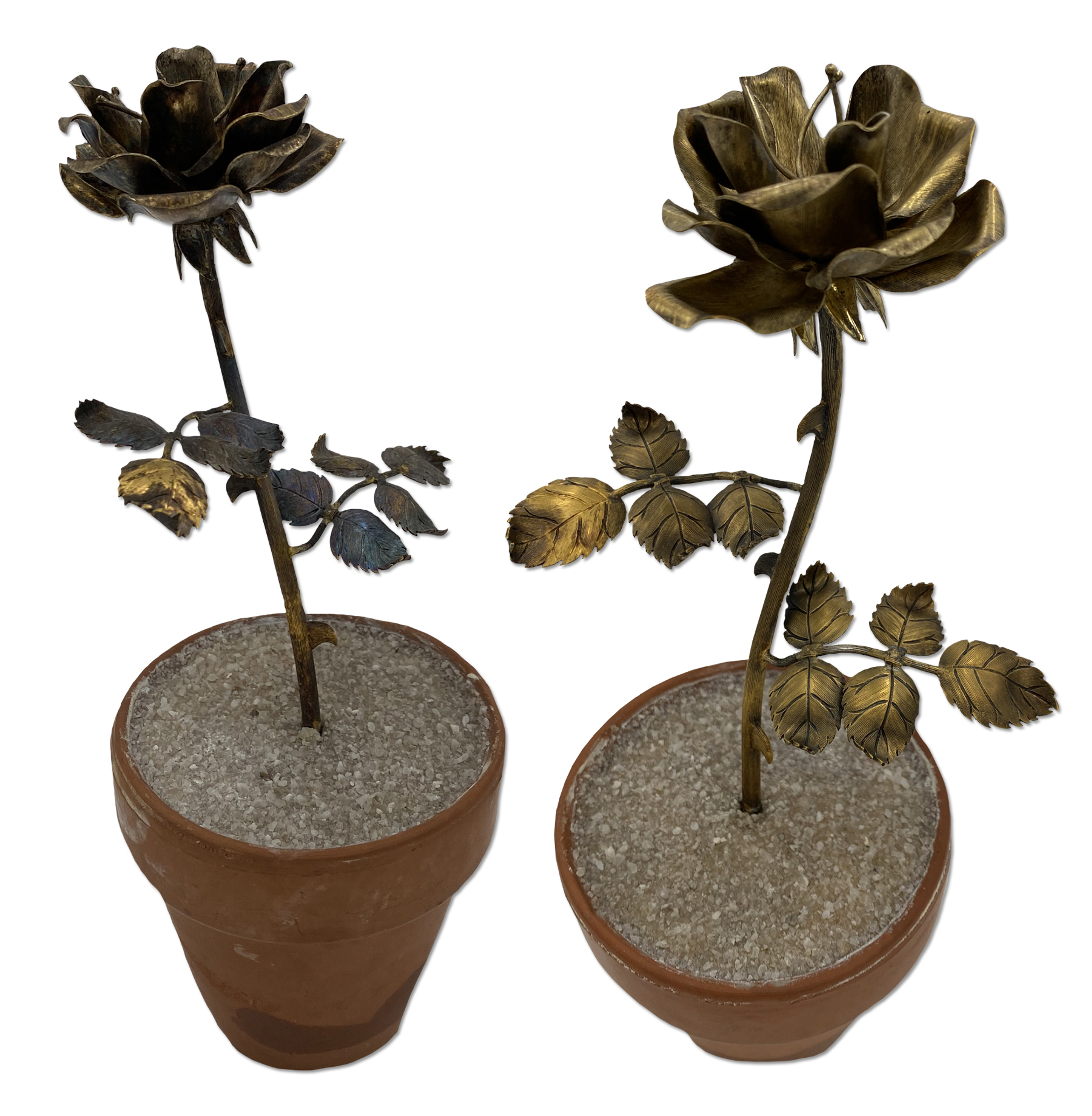
This is completed with tiny cotton swabs, allowing them to get into the delicate areas of decoration without causing harm. Due to the delicate nature of the ormolu surface, cleaning should only be undertaken by an expert. Household cleaning agents could severely damage this historic finish and even water can adversely disturb the gold layer.
 Above: our conservator Amelia working on an ormolu mantle clock in our gilding studio
Above: our conservator Amelia working on an ormolu mantle clock in our gilding studio
In cases where the ormolu is tarnished or abraded, our team works to colour-match a replacement patina that will exactly match the original. Ormolu is not re-fired with mercury as it was in the past, instead our conservators use a safe method, employing real gold leaf to ensure accuracy for the history and value of the object. Items can either be fully re-gilded or have smaller areas restored with a matching patina.
Breakages may also occur with the structure of decoration or within other areas such as a clock or pocket watch. Our gilt object conservators can restore breakages with a near-seamless finish, whilst our other experts – such as our horologists – can attend to any issues with internal mechanisms.
 Above: a 11-12th century Chinese Guardian Protector of the East with historic patina and a late 18th century clock with original ormolu in good condition
Above: a 11-12th century Chinese Guardian Protector of the East with historic patina and a late 18th century clock with original ormolu in good condition
Sometimes a combination of materials are present, such as porcelain, enamel and painted surfaces – as seen on the side of the carriage clock below. Our studio is unique in offering a comprehensive team of conservators who can assist with various elements of an item at the same time, allowing for a collaborative result that ensures all areas are safe and well-preserved.
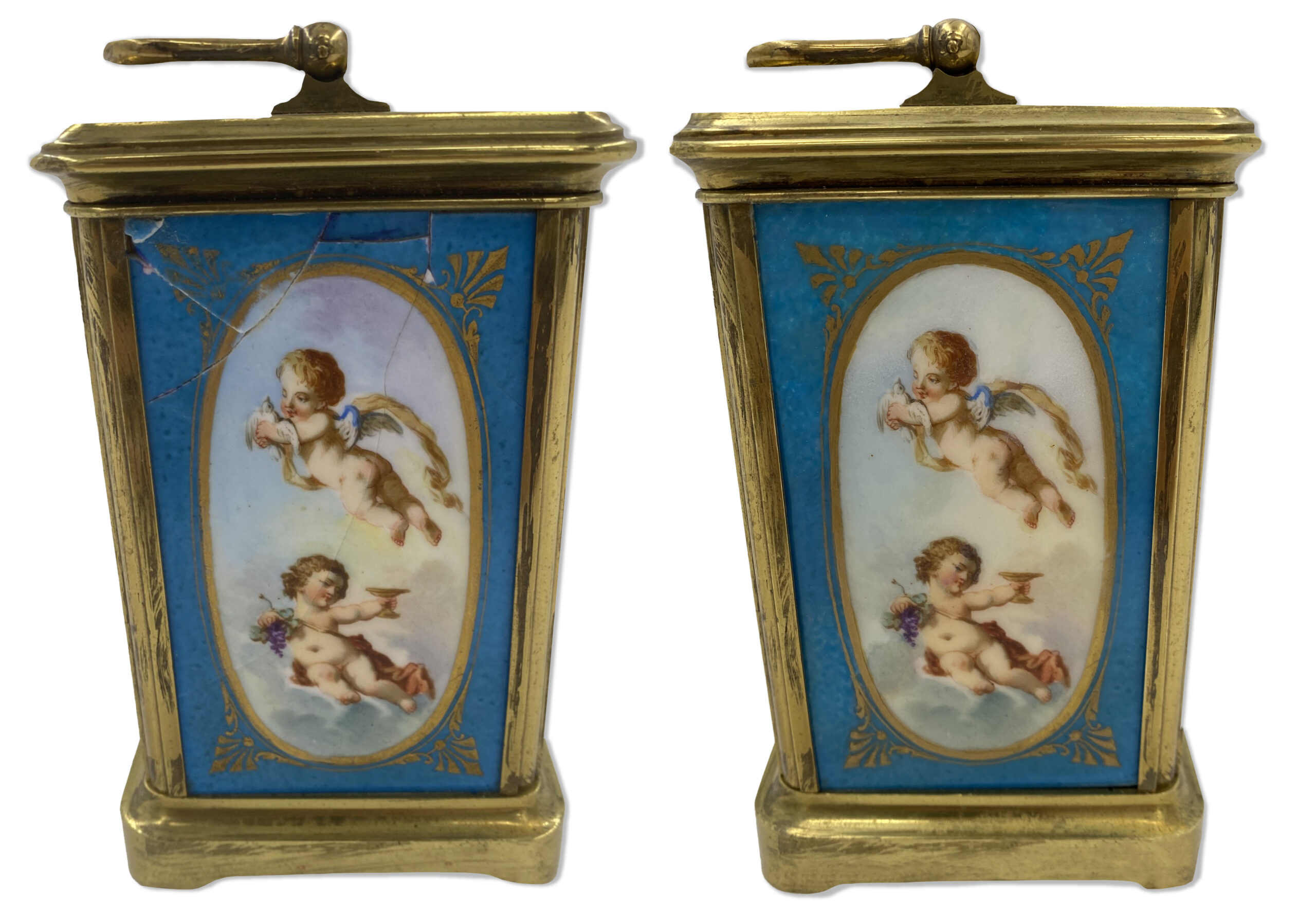
How can we help?
If you have an ormolu item or another gilt object that may benefit from professional conservation and restoration, please speak to our helpful team today. E-mail us via [email protected] or call 0207 112 7576 for more information.

 Above: a selection of ormolu antiques including a pocket watch, candlestick, relief mounts, sculptures and frames
Above: a selection of ormolu antiques including a pocket watch, candlestick, relief mounts, sculptures and frames Above: an ormolu relief featuring the gods Jupiter and Juno, late 18th century
Above: an ormolu relief featuring the gods Jupiter and Juno, late 18th century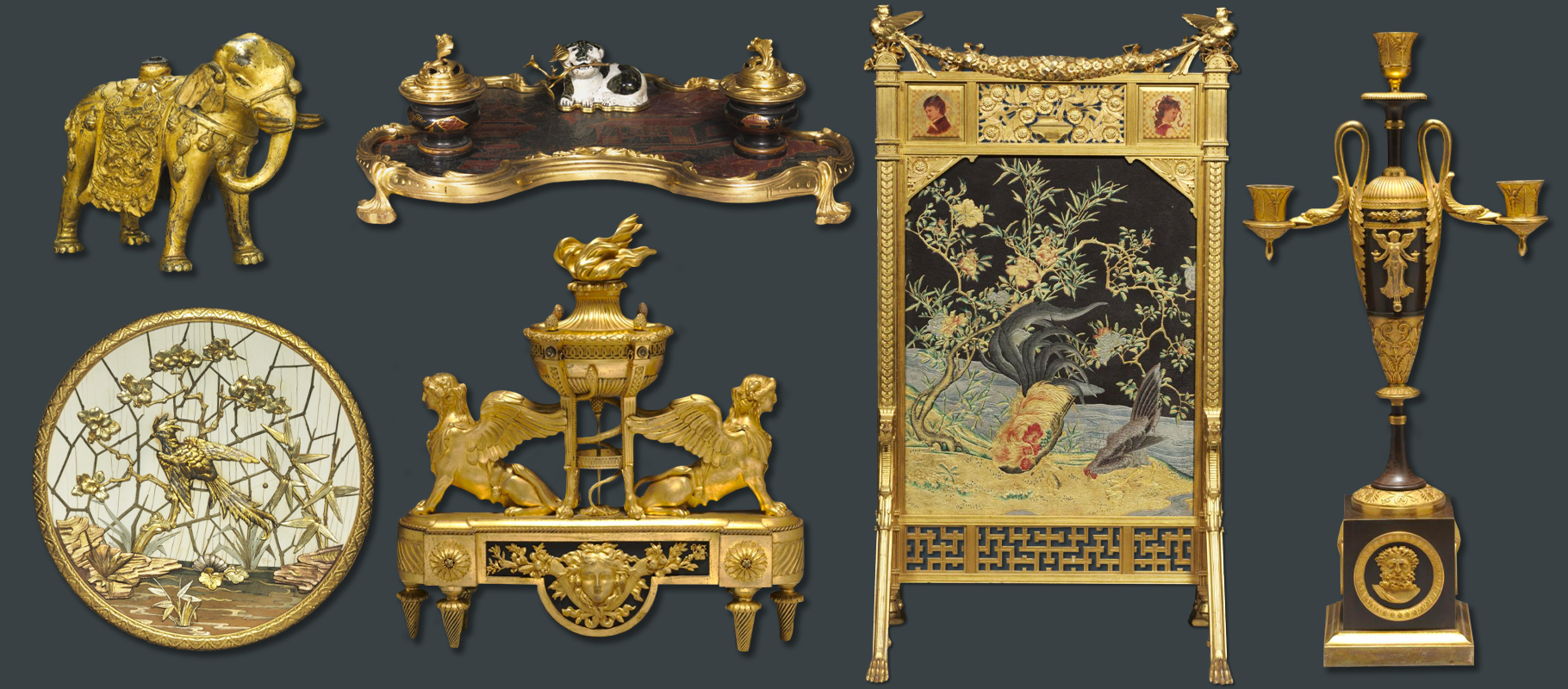 Above: ormolu items including a Chinese caparisoned elephant, a plaque with ivory, two ink stands, a firescreen, and a neoclassical candelabrum
Above: ormolu items including a Chinese caparisoned elephant, a plaque with ivory, two ink stands, a firescreen, and a neoclassical candelabrum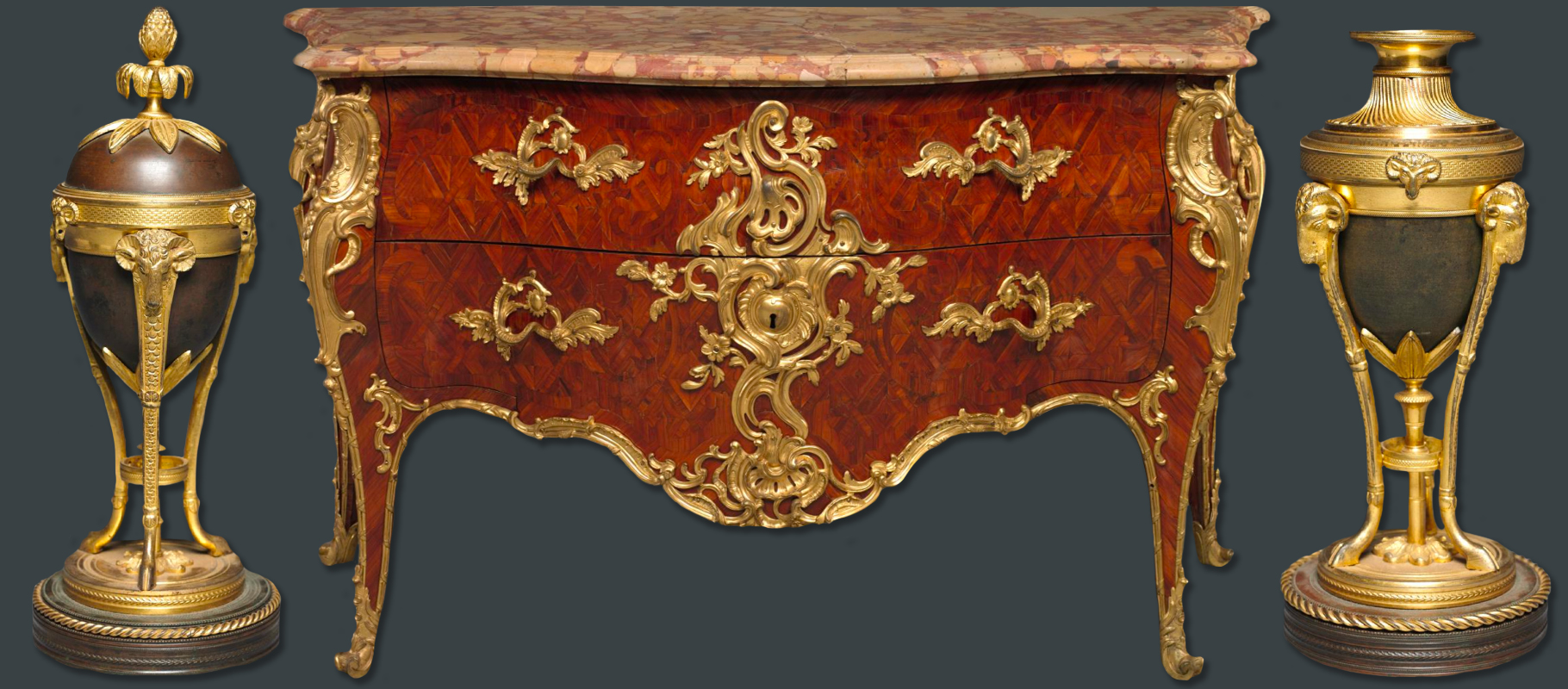 Above: ormolu adds structural support to furniture and decorative items as well as being an oppulent embellishment
Above: ormolu adds structural support to furniture and decorative items as well as being an oppulent embellishment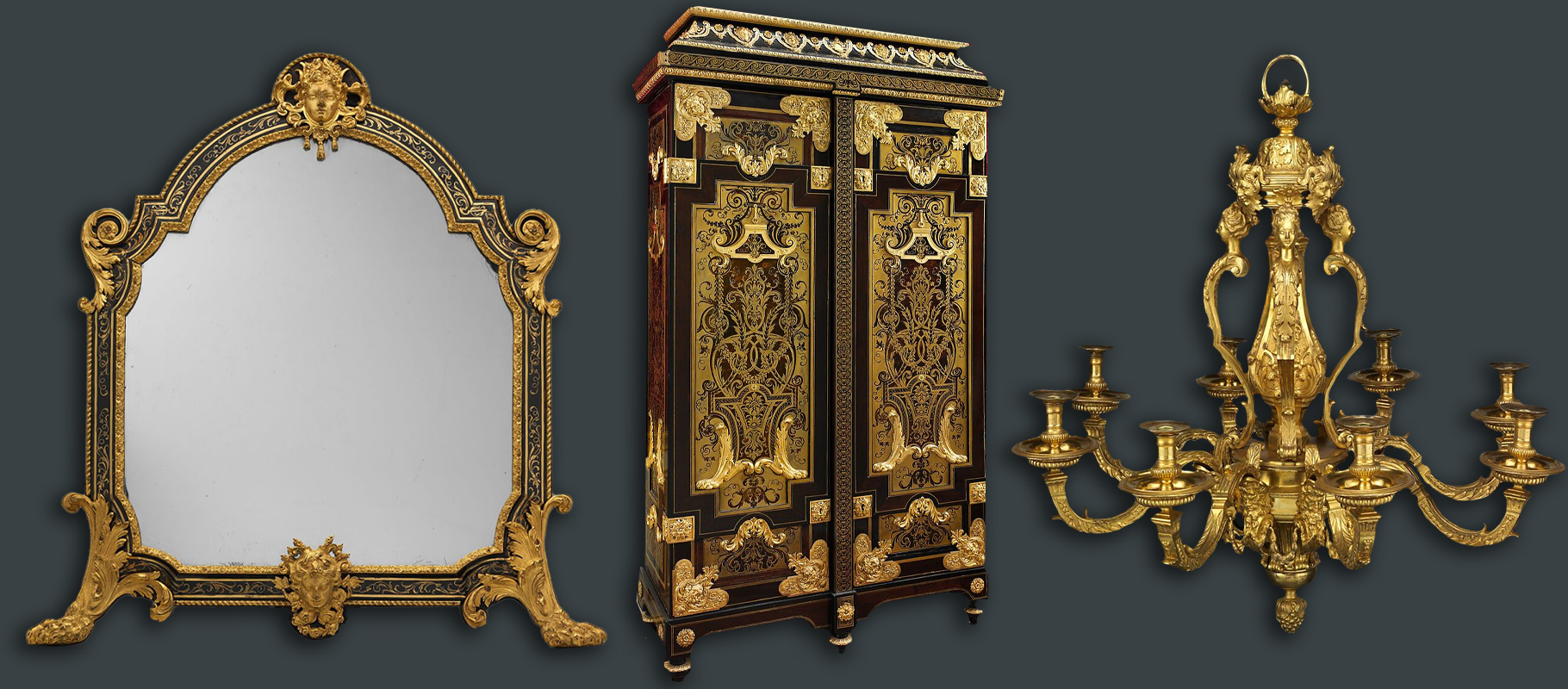 Above: three pieces attributed to the studio of Charles Boulle
Above: three pieces attributed to the studio of Charles Boulle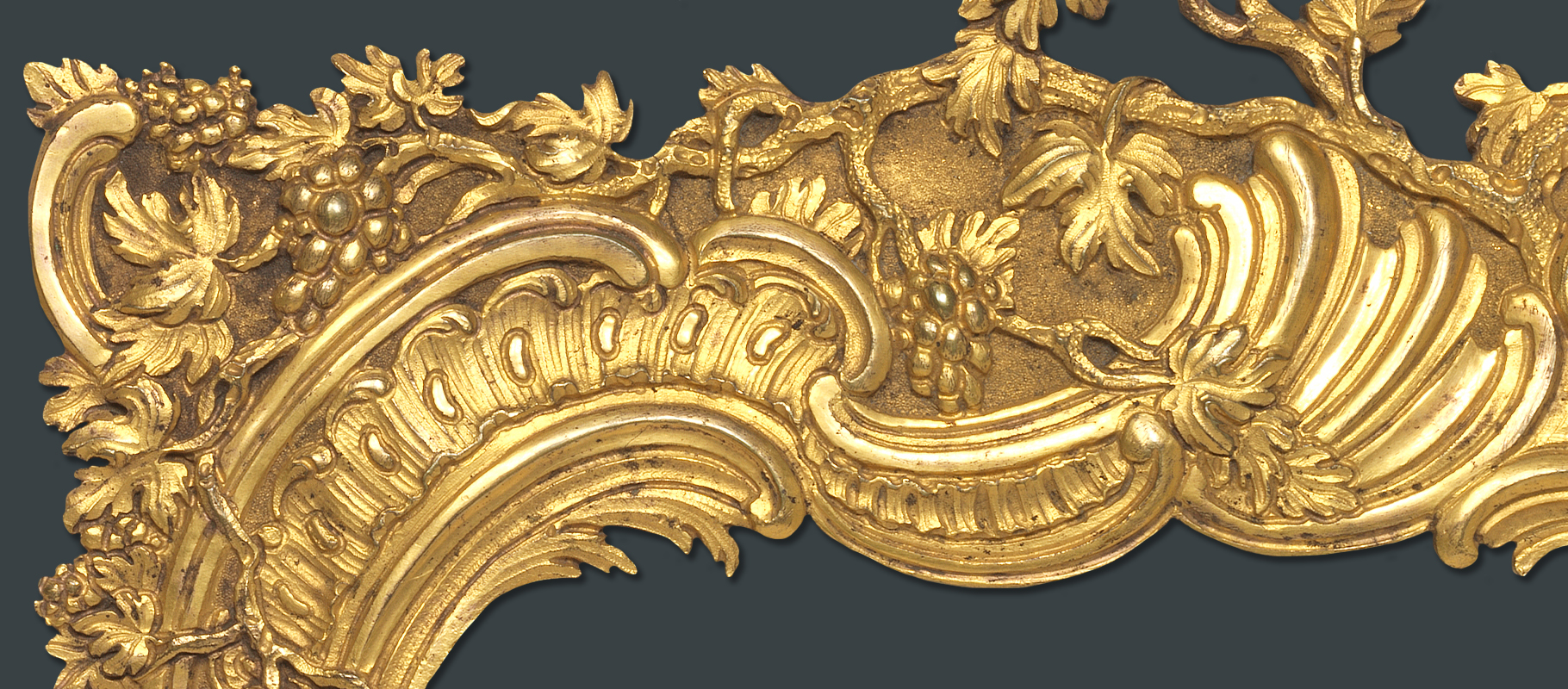 Above: detail of an ormolu frame from 1745
Above: detail of an ormolu frame from 1745 Above: a selection of tarnished and abraded ormolu sculptures
Above: a selection of tarnished and abraded ormolu sculptures Above: our conservator Amelia working on an ormolu mantle clock in our gilding studio
Above: our conservator Amelia working on an ormolu mantle clock in our gilding studio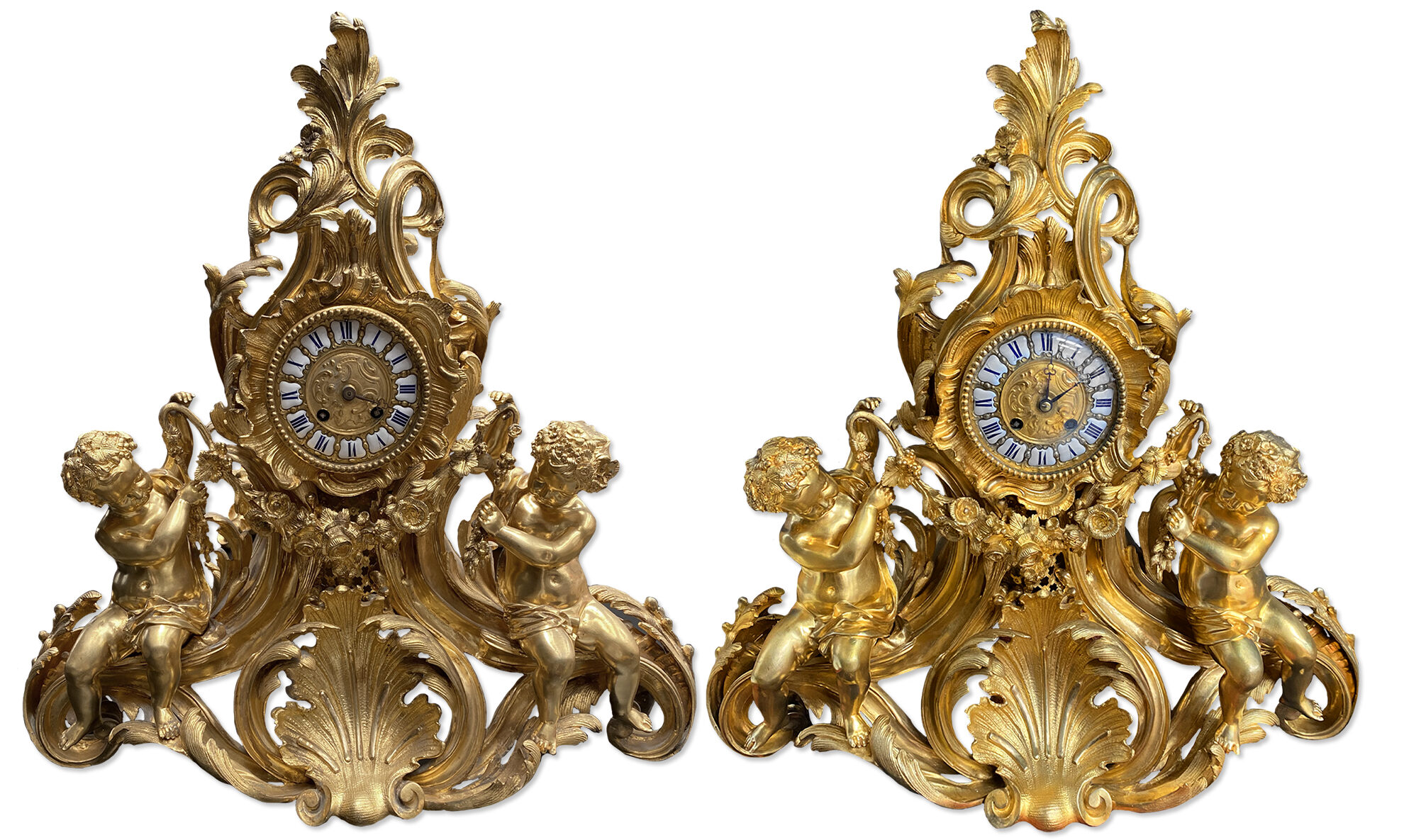
 Above: a 11-12th century Chinese Guardian Protector of the East with historic patina and a late 18th century clock with original ormolu in good condition
Above: a 11-12th century Chinese Guardian Protector of the East with historic patina and a late 18th century clock with original ormolu in good condition 




